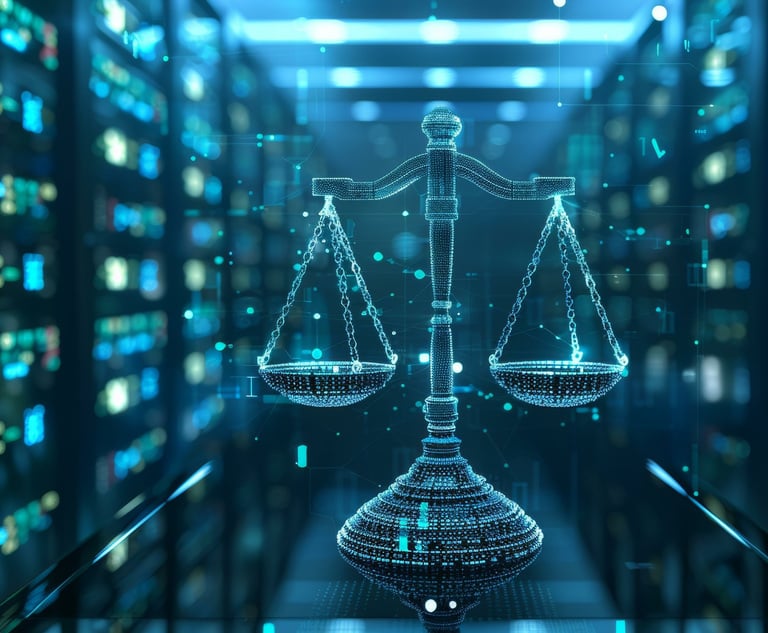'A Tidal Wave of Change': Plaintiffs Firms Are Tapping Data Analytics, but Some Are Still Reluctant
The plaintiffs bar has started getting into the Big Data game as well, although so far, the emphasis has been on case management.
January 27, 2020 at 05:08 PM
8 minute read
 Photo: Elnur/Shutterstock.com
Photo: Elnur/Shutterstock.com
Editor's note: This is the first article in a series.
As in-house attorneys and defense lawyers bolster their use of data analytics tools and predictive coding to help them litigate cases, plaintiffs firms are also using emerging information technologies of their own—although when it comes to developing litigation strategies, most say that the old ways are still best.
According to a December article in ALM's Corporate Counsel, the insurance industry is leading the way when it comes to using predictive analytics and artificial intelligence to help develop litigation strategies, such as when to settle a case and what lawyers should be used before a specific judge. These "Moneyball" tactics, which can drill down into specific venues to determine the likelihood of a motion's success in front of a certain judge, have increasingly been adopted by other big companies' legal departments and defense firms.
The plaintiffs bar has started getting into the Big Data game as well, although so far, the emphasis has been on case management. When it comes to bringing actions in unfamiliar venues, most plaintiffs attorneys say they prefer sticking with human intelligence.
"If it's so easy to predict the outcome of a case, then why have 12 people sit in a box for a couple of weeks?" Philadelphia-based lawyer Jon Ostroff of Ostroff Injury Law said. "If you know the judge's philosophy and read about decisions they've made in other cases, you're going to find more of a way to resonate with them. … I would rather talk to members of the bar and lawyers I respected about their experiences with a specific judge."
Ostroff said he was not against using data analytics tools to help guide a case, but that many tools seemed to oversimplify the issues, and that tools like jury consultants and focus groups are far more beneficial for plaintiffs lawyers.
"To predict the approach of an insurance company in a negotiation may be useful, but then you have to be careful about overrelying on settlement tendencies and underrelying on the jury," he said. "You don't build a case to settle. You build a case to go to trial."
His sentiments were echoed throughout the plaintiffs bar.
"I'm not running a data analysis on what motion I'm going to file … I'm just talking to local counsel," Jim Beasley Jr. of The Beasley Firm said. "I don't think that it is as useful or critical, or even cost effective, for your typical plaintiffs guys. … At some point, you can have all the data in the world, but you can have a jury panel that you can't connect with."
However, one area where plaintiffs firms are advancing their technological capabilities is in case management. According to lawyers and tech industry officials, in the past three to five years, new platforms and services have begun to emerge specifically geared toward allowing law firms to better manage and understand their case loads. Companies, such as Litify, which spun off from the Florida-based firm Morgan & Morgan, and MERR Consulting Group, which was founded by two former paralegals from The Beasley Firm, have entered the market, finding that there is a big need from the plaintiffs bar.
"There's been a tidal wave of change coming into our space," said Shawn Lehocky, chief strategy officer for Pond Lehocky, a Philadelphia-based workers' compensation firm. "Traditionally law firms use case management systems, on the plaintiffs side, to manage files. Those systems were never meant to be a full enterprise system, where HR is tied into finances, and into marketing. Historically, every department had different software that didn't talk to each other."
With these new programs and platforms coming online, that is changing, according to Lehocky, whose firm uses the Litify platform and, through its business venture, LegalOps, develops niche applications for other firms that also use the program.
According to Lehocky, emerging technologies are allowing plaintiffs firms to more quickly identify cases that should be referred out to other firms, and keep tabs on those cases so there are shorter lag times if the referral is initially rejected. The technology can also help the firm identify other cases or needs that the plaintiff might have, which, along with providing better services, could provide another revenue stream for the firm. Even analyzing communications with clients can provide opportunities, Lehocky said.
"Our original website used the word 'attorney,'" Lehocky said. "We went back through our chats, and clients used the word 'lawyer,' not attorney. As simple as that may seem, as interchangeable as that may seem, I need to use the words that apply to them. The words that they're using."
The reason why the plaintiffs bar is more focused on case management may come down to the different business models each side uses.
"We have the incentive to be efficient in our time," Lehocky said. "The other side has a different incentive. They get paid by hours spent."
Ostroff noted that the emerging case management tools can also help firm leaders monitor the effectiveness of paralegals and attorneys, and its analysis of key intake metrics can help identify issues that may come up like motions that may need to be filed, or documents that may need to be tracked down.
However, some firms that focus on more document-heavy work have not been shy about using predictive tools in litigation—specifically, in discovery.
Attorneys with San Diego-based Robbins Geller Rudman & Dowd, which focuses on complex securities fraud and antitrust class actions, said e-discovery data analytics are key to culling through massive data dumps to help identify the key documents and then further prioritize them.
"It's going through all that information and figuring out what you want to target," Christine Milliron, the firm's director of e-discovery, said.
Along with creating visualizations of email chains to help attorneys determine who is talking with who, the tools can also help lawyers identify patterns and anomalies in the documents, such as increased communications in a given week on a topic, or when something is sent after normal hours. The tools can also help identify what documents might be missing.
Noting that the defense bar can also use these technologies to tweak discovery results, Robbins Geller partner Tor Gronborg said, "[The technology] can be used for good and it can be used for mischief."
According to Lea Bays, an of counsel lawyer with Robbins Geller focusing on e-discovery issues, knowing the ins and outs of the tools that opposing counsel uses can also help firms negotiate the terms of discovery to make sure key items don't get left out. She noted that sometimes defense lawyers push back on requests to reveal their search metrics, often blaming the plaintiffs for requesting too much information. But, she said, increased transparency should be beneficial to all parties.
"Everyone is interested in getting to the relevant documents faster and getting them out with less time wasted," Bays said. "Some of the arguments against [transparency] don't seem to make a lot of sense."
Thomas Kline of Philadelphia-based Kline & Specter, whose firm maintains large active dockets in mass tort programs, agreed that having tools to effectively manage and analyze documents is key. For instance, he said that, in preparing for the Risperdal trial that resulted in an $8 billion jury award, his team was able to quickly search the massive record for the words "halo" and "spillover effect"—terms allegedly used by the defendant's marketing department to describe off-label sales—so they could be referenced before the jury.
In mass tort cases, attorneys need access to individual medical records for each plaintiff, as well as access to the thousands of internal documents turned over by the defendant, which is partly why his firm, he said, recently decided to move to a new cloud-based case management system.
But still, according to Kline, there are some things data analytics cannot yet do, and identifying the truly significant passages and realizing how they might play in front of a jury is one of those things.
"You have to have a very good sense of what you are trying to prove and how you're going to prove it," he said. "There's no substitute for the human eye on the raw documents."
The next installment of the series will examine the trend of tech startups spinning out of plaintiffs law firms.
This content has been archived. It is available through our partners, LexisNexis® and Bloomberg Law.
To view this content, please continue to their sites.
Not a Lexis Subscriber?
Subscribe Now
Not a Bloomberg Law Subscriber?
Subscribe Now
NOT FOR REPRINT
© 2025 ALM Global, LLC, All Rights Reserved. Request academic re-use from www.copyright.com. All other uses, submit a request to [email protected]. For more information visit Asset & Logo Licensing.
You Might Like
View All
Montgomery McCracken Touts 'Record' Financial Performance Despite Shrinking Head Count
6 minute read
Class Action Settlements Totaled $40B+ Three Years in a Row: 'We’re in a New Era'
5 minute read
AI's Place in Big Law Broadens, As Firms Embrace Fresh Uses of the Technology
Trending Stories
Who Got The Work
J. Brugh Lower of Gibbons has entered an appearance for industrial equipment supplier Devco Corporation in a pending trademark infringement lawsuit. The suit, accusing the defendant of selling knock-off Graco products, was filed Dec. 18 in New Jersey District Court by Rivkin Radler on behalf of Graco Inc. and Graco Minnesota. The case, assigned to U.S. District Judge Zahid N. Quraishi, is 3:24-cv-11294, Graco Inc. et al v. Devco Corporation.
Who Got The Work
Rebecca Maller-Stein and Kent A. Yalowitz of Arnold & Porter Kaye Scholer have entered their appearances for Hanaco Venture Capital and its executives, Lior Prosor and David Frankel, in a pending securities lawsuit. The action, filed on Dec. 24 in New York Southern District Court by Zell, Aron & Co. on behalf of Goldeneye Advisors, accuses the defendants of negligently and fraudulently managing the plaintiff's $1 million investment. The case, assigned to U.S. District Judge Vernon S. Broderick, is 1:24-cv-09918, Goldeneye Advisors, LLC v. Hanaco Venture Capital, Ltd. et al.
Who Got The Work
Attorneys from A&O Shearman has stepped in as defense counsel for Toronto-Dominion Bank and other defendants in a pending securities class action. The suit, filed Dec. 11 in New York Southern District Court by Bleichmar Fonti & Auld, accuses the defendants of concealing the bank's 'pervasive' deficiencies in regards to its compliance with the Bank Secrecy Act and the quality of its anti-money laundering controls. The case, assigned to U.S. District Judge Arun Subramanian, is 1:24-cv-09445, Gonzalez v. The Toronto-Dominion Bank et al.
Who Got The Work
Crown Castle International, a Pennsylvania company providing shared communications infrastructure, has turned to Luke D. Wolf of Gordon Rees Scully Mansukhani to fend off a pending breach-of-contract lawsuit. The court action, filed Nov. 25 in Michigan Eastern District Court by Hooper Hathaway PC on behalf of The Town Residences LLC, accuses Crown Castle of failing to transfer approximately $30,000 in utility payments from T-Mobile in breach of a roof-top lease and assignment agreement. The case, assigned to U.S. District Judge Susan K. Declercq, is 2:24-cv-13131, The Town Residences LLC v. T-Mobile US, Inc. et al.
Who Got The Work
Wilfred P. Coronato and Daniel M. Schwartz of McCarter & English have stepped in as defense counsel to Electrolux Home Products Inc. in a pending product liability lawsuit. The court action, filed Nov. 26 in New York Eastern District Court by Poulos Lopiccolo PC and Nagel Rice LLP on behalf of David Stern, alleges that the defendant's refrigerators’ drawers and shelving repeatedly break and fall apart within months after purchase. The case, assigned to U.S. District Judge Joan M. Azrack, is 2:24-cv-08204, Stern v. Electrolux Home Products, Inc.
Featured Firms
Law Offices of Gary Martin Hays & Associates, P.C.
(470) 294-1674
Law Offices of Mark E. Salomone
(857) 444-6468
Smith & Hassler
(713) 739-1250






